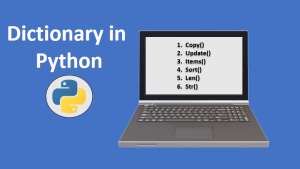Introduction to the Modulo Operator in Python
The modulo operator % is a fundamental arithmetic operator in Python that calculates the remainder of a division operation. It is often used in various programming tasks, such as checking for divisibility, iterating over a sequence in a cyclical manner, and manipulating indices or positions in data structures. In this article, we will explore the Python modulo operator and its applications. By the end of this article, you will have a clear understanding of how the modulo operator works and how to use it effectively in your Python code.
Understanding the Modulo Operator
Overview of the Modulo Operator
The modulo operator is represented by the % symbol in Python. It takes two operands: the dividend and the divisor. The operator performs the division operation and returns the remainder as the result. For example, a % b calculates the remainder when a is divided by b.
Examples of the Modulo Operator
Let’s look at some examples to understand how the modulo operator works:
Example 1: Checking for Even or Odd Numbers
The modulo operator is commonly used to determine whether a number is even or odd. When a number is divided by 2, if the remainder is 0, it is even; otherwise, it is odd.
num = 7
if num % 2 == 0:
print(num, "is even")
else:
print(num, "is odd")
Output:
7 is odd
In this example, we use the modulo operator % to check if the number num is divisible by 2. If the remainder is 0, we print that the number is even; otherwise, we print that it is odd.
Example 2: Cycling through a Sequence
The modulo operator can be used to cycle through a sequence, such as a list or an array, in a circular manner. By using the modulo operator with the length of the sequence, we can ensure that the index wraps around to the beginning when it reaches the end.
fruits = ["apple", "banana", "cherry", "durian"]
index = 7
selected_fruit = fruits[index % len(fruits)]
print("Selected fruit:", selected_fruit)
Output:
Selected fruit: cherry
In this example, we have a list of fruits and an index value of 7. By using the modulo operator % with the length of the fruits list, we ensure that the index wraps around and selects the appropriate fruit from the list.
Practical Applications of the Modulo Operator
Divisibility Testing
The modulo operator is often used to check for divisibility. By checking if the remainder is 0, we can determine if one number is divisible by another.
num = 15
if num % 5 == 0:
print(num, "is divisible by 5")
else:
print(num, "is not divisible by 5")
Output:
15 is divisible by 5
Finding the Last Digit of a Number
The modulo operator is useful for extracting the last digit of a number. By taking the number modulo 10, we obtain the remainder, which represents the last digit.
num = 12345
last_digit = num % 10
print("Last digit:", last_digit)
Output:
Last digit: 5
Handling Wrapping Indices
In data structures where indices or positions are cyclical, the modulo operator helps handle wrapping indices. By using the modulo operator with the length of the structure, we ensure that the index wraps around to the beginning when it exceeds the length.
queue = ["a", "b", "c"]
index = 5
next_item = queue[index % len(queue)]
print("Next item:", next_item)
Output:
Next item: b
Conclusion
The modulo operator % is a powerful tool in Python for performing various tasks, such as checking for divisibility, cycling through sequences, extracting digits, and handling wrapping indices. By understanding the behavior of the modulo operator and its applications, you can write more efficient and concise Python code. Experiment with different scenarios and explore the versatility of the modulo operator to enhance your programming skills.

Hi all, my name is Angelika and I am one of the authors of the EasyTechh website. Like the rest of our team I am incredibly ambitious and I love helping people.
That’s why I write here and not only here 😉 I write interesting and useful for people articles in the IT sphere and a little bit about life.
Enjoy reading.










+ There are no comments
Add yours